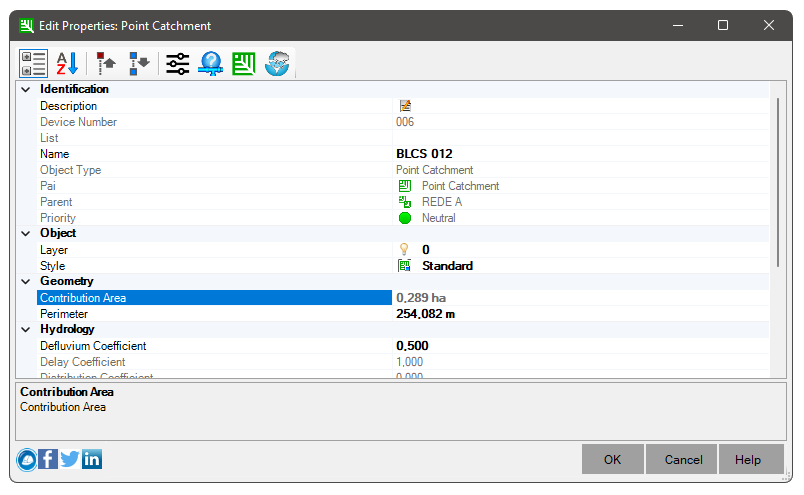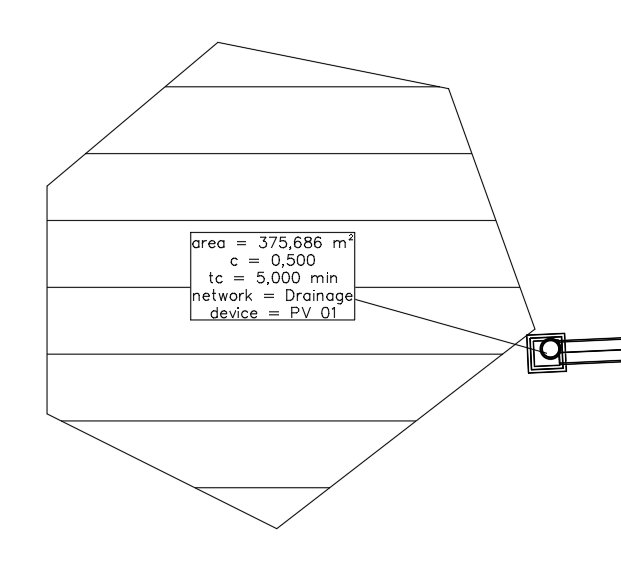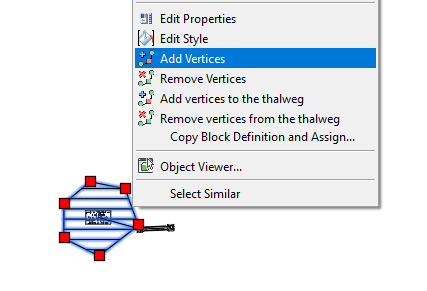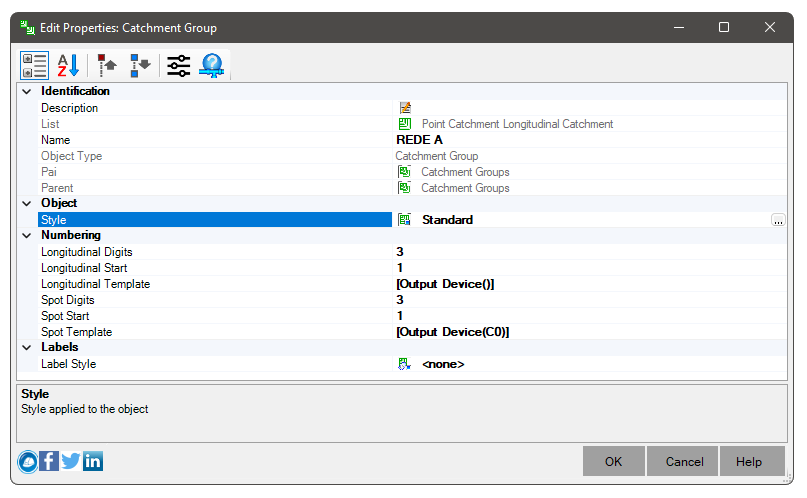 SCATCHMENT
SCATCHMENT
The command
 SCATCHMENT creates a Catchment.
SCATCHMENT creates a Catchment.
To use, call SCATCHMENT from the command line, menu, toolbar or Ribbon, then follow these steps:
- Select a device from a network of drainage.
If you select a network that does not
it is draining, it will not be possible to continue
- If the device is an
 External Reference, unable to continue
External Reference, unable to continue
- Select the catchment group that will contain the Catchment being launched.
The catchment group allows you to apply a pre-configured style.
If not selected, it will not be possible to continue
- Select a polyline, if you have already drawn it, otherwise inform the coordinates of the vertices, clicking them on the screen.
If no vertex is clicked
and no polyline entered, it will not be possible to continue
- Select a polyline that represents the thalweg.
If there is no such polyline, you can click the vertex coordinates.
Important: the path
it must be from upstream to downstream, that is, starting at the farthest point and proceeding to the point of discharge.
In general, subdivisions do not need
more elaborate methods to determine the CT, being arbitrated 5, 10 or even 15 minutes.
If this is the case, ignore the thalweg data and enter only the TC value in the Catchment properties
- A screen will open with the Catchment properties, such as C, Tc, etc.
Edit them and click OK:

- After that, the Catchment will be shown on the screen

After creating the Catchment, it is possible to edit its properties, add/remove vertices in the area or in the thalweg.
Try selecting the Catchment and clicking the right mouse button:

The following commands are available to edit the Catchment:
 SADDVERTEX to add vertices to the Catchment
SADDVERTEX to add vertices to the Catchment SDELVERTEX to remove vertices from the Catchment
SDELVERTEX to remove vertices from the Catchment SADDVERTEXTALV to add vertices to the thalweg
SADDVERTEXTALV to add vertices to the thalweg SDELVERTEXTALV to remove thalweg vertices
SDELVERTEXTALV to remove thalweg vertices SEDITSTYLE to edit the style
SEDITSTYLE to edit the style SADDLABELS to add label
SADDLABELS to add label SPROPS to edit properties like C or TC coefficient, style, etc
SPROPS to edit properties like C or TC coefficient, style, etc SMOVETOGROUP - Move selected basins to another basin group"
SMOVETOGROUP - Move selected basins to another basin group"
 Note: for the Catchment to have a label, use the command
Note: for the Catchment to have a label, use the command  SADDLABELS.
Or, configure the
SADDLABELS.
Or, configure the  Catchment Group that is being populated so that it has a default label style, clicking its properties in the Toolspace:
Catchment Group that is being populated so that it has a default label style, clicking its properties in the Toolspace:

 Note: To be able to apply changes to this command, a
license is required. Otherwise, you will not be able to create catchments.
Note: To be able to apply changes to this command, a
license is required. Otherwise, you will not be able to create catchments.
![]() SCATCHMENT creates a Catchment.
SCATCHMENT creates a Catchment.



![]() Note: for the Catchment to have a label, use the command
Note: for the Catchment to have a label, use the command ![]() SADDLABELS.
Or, configure the
SADDLABELS.
Or, configure the ![]() Catchment Group that is being populated so that it has a default label style, clicking its properties in the Toolspace:
Catchment Group that is being populated so that it has a default label style, clicking its properties in the Toolspace:

![]() Note: To be able to apply changes to this command, a
license is required. Otherwise, you will not be able to create catchments.
Note: To be able to apply changes to this command, a
license is required. Otherwise, you will not be able to create catchments.